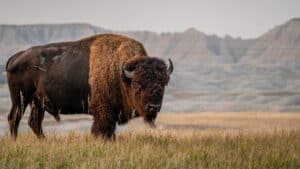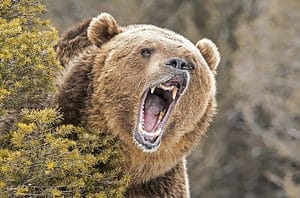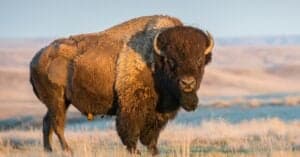When you think of cute baby animals, you probably don’t imagine one that weighs 70 pounds. But that’s how big a baby bison can be at birth! Although it shouldn’t be surprising, considering full-grown male bison can weigh up to 2,200 pounds.
American bison, also called buffalo, once roamed the Great Plains by the millions. Today, you can find bison running free in national parks and preserves. Technically, buffalo are a different animal than bison. However, people in North America tend to use the words buffalo and bison interchangeably. Once hunted nearly to extinction, conservation efforts have helped the bison population thrive and grow.
Want to learn more about bison and their young? Read on for nine fascinating facts about baby bison!
1. Baby Bison Stay with Their Moms for About a Year
Bison are social mammals that live in herds. When the babies, also called calves, are born, they stick close to their mothers. They stay isolated from the herd for a couple of days before joining the group.
The calves wean from their mother’s milk around seven months, but they begin eating vegetation as young as one week old. Even after they have stopped nursing, the babies continue to hang around their mothers until they are around one year old.
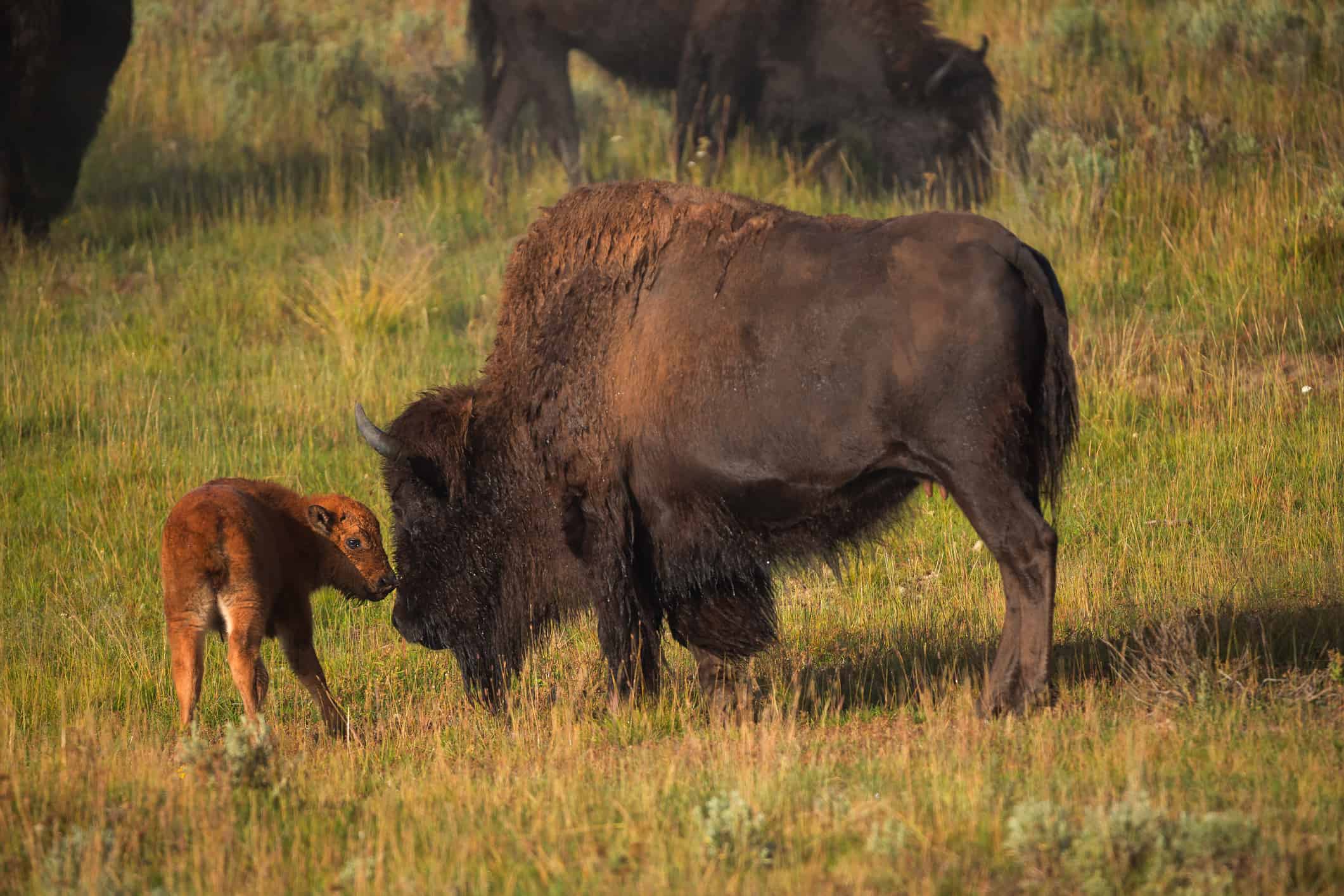
Bison calves stay by their mother’s side for their first year..
©iStock.com/Bill_Vorasate
2. Baby Bison Can Run When They Are Just a Few Hours Old
Bison are born with their eyes open and can stand after just a few minutes. And after only a few hours, the calves can do more than walk. They can run! This was an essential trait for animals that shared their home on the prairie with predators such as wolves.
It may seem surprising due to their immense size, but bison grow up to be very fast runners. They have clocked speeds up to 40 miles per hour. To give some perspective, race horses can maintain speeds of around 40 to 44 miles per hour, but only for short periods.
3. Baby Bison Weigh 30 to 70 Pounds at Birth
As we said earlier, ranchers have recorded baby bison to be born weighing 70 pounds. However, this is on the high end of average. Most bison are born at around 30 to 40 pounds.
Unsurprisingly, the calves are born large since bison are the largest mammals in North America. They can weigh 930 to 2,200 pounds when fully grown. Male bison are larger than the females and can grow to be over six feet tall and 11 feet long.
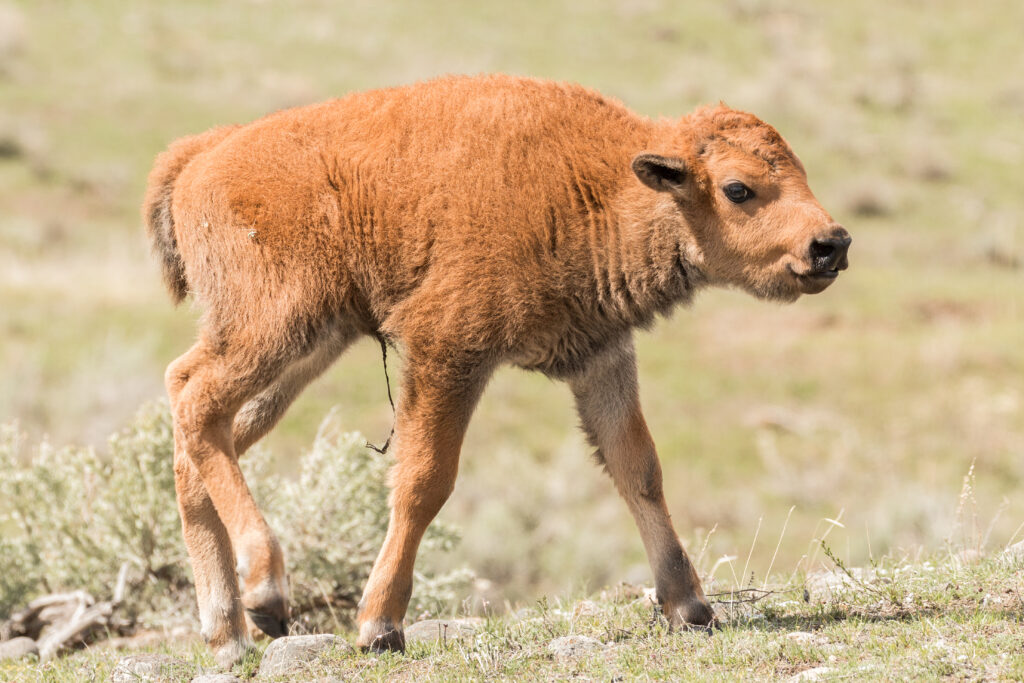
A baby bison can weigh between 30-70 pounds at birth and can run after only a few hours.
©Michelle Holihan/Shutterstock.com
4. Baby Bison Are Called Red Dogs
Bison calves are born with reddish-colored fur that darkens to brown as they age. Because of their red coloring, the babies are sometimes referred to as “red dogs” or “cinnamons.”
Once their fur darkens and they begin to grow the characteristic bison shoulder hump, the babies no longer look anything like dogs.
5. Baby Bison Are Born in the Spring
Male bison can be heard bellowing in the distance during mating season, which runs from July through September. The gestational period for bison mothers is nine months. The new bison babies are born in the spring, from March through May.
6. Baby Bison Are Strong Swimmers
In addition to being able to run when they are only a few hours old, bison calves are athletic and agile enough to be able to swim down rivers with their mothers.
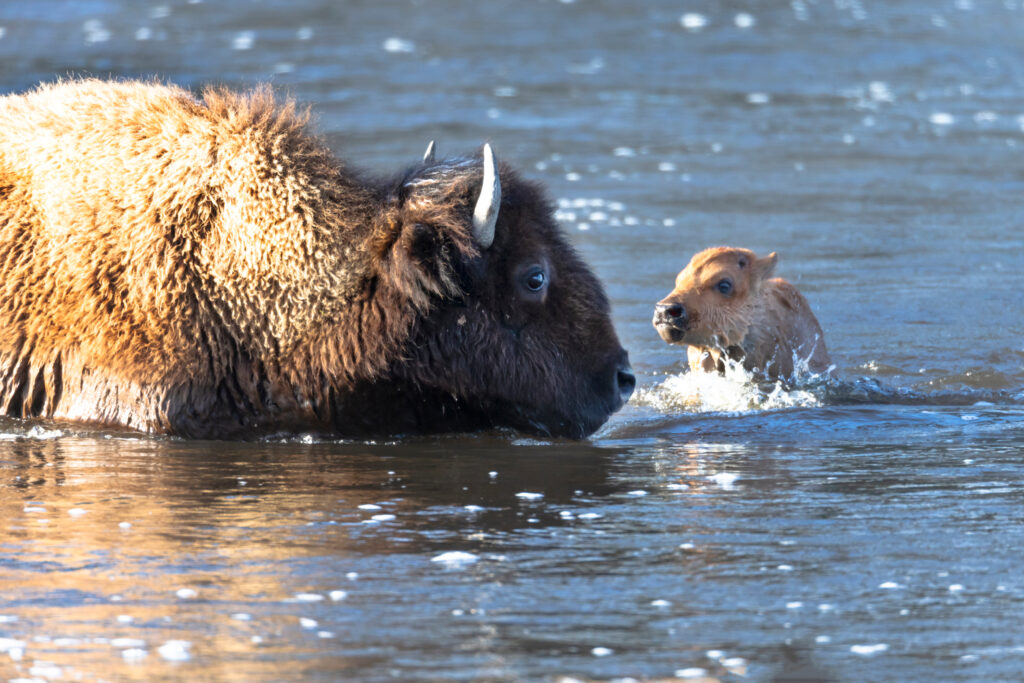
Bison calves are athletic and agile enough to be able to swim down rivers with their mothers shortly after birth.
©Danita Delimont/Shutterstock.com
7. Very Rarely Bison Mothers Will Give Birth to Twins
Bison mothers typically give birth to one baby per year. Rarely, a mother bison will give birth to twins. Twin babies are seen as a good sign as they signify a healthy herd.
8. The Entire Herd of Bison Protects the Young
Being social animals, the mothers are joined by the entire herd in protecting their young. Until they grow older, larger, and better able to fend for themselves, bison calves are in danger from natural predators such as grizzly bears and wolves.
The herd protects the young by standing and facing the danger. Unlike easier prey that runs away, such as deer and elk, bison stand and face their predators as a group, making bison much more difficult to kill than other prey.
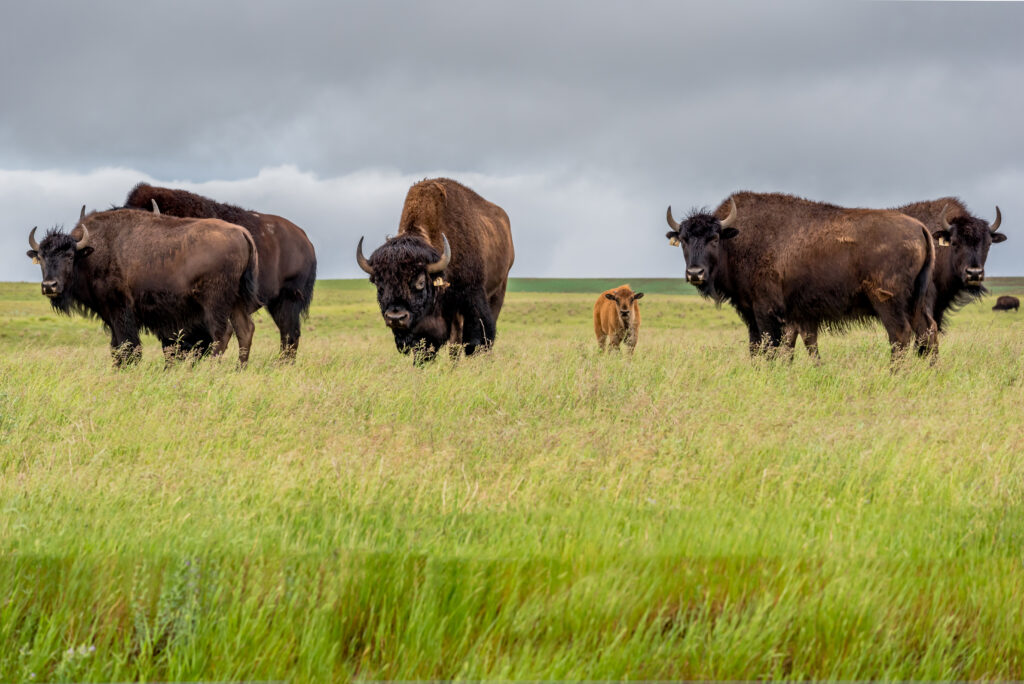
The entire bison herd works together to protect calves from danger.
©Nancy Anderson/Shutterstock.com
9. A White Baby Bison is Very Rare
After baby bison shed their reddish-colored fur, their coat grows dark brown to almost black. However, very rarely, a white bison is born. When one of these adorable babies shows up, it really stands out from the crowd.
Native Americans believed white bison to be sacred. Their white fur is caused by a lack of pigment from conditions such as albinism or leucism. It’s no wonder that Native Americans were in awe of white bison. It’s estimated only one white bison is born per 10 million.
The photo featured at the top of this post is © Marcia Straub/Shutterstock.com
Thank you for reading! Have some feedback for us? Contact the AZ Animals editorial team.



